When the first Honda Ridgeline was released back in 2006, it was greeted with lots of positive feedback. Unfortunately, some of its charm started to fade away as the upgrades Honda was introducing were not enough. Rather than launch a new generation, the Ridgeline’s popularity slowly declined until Honda stopped production in 2014. Well, now the 2017 Honda Ridgeline is back with a long-awaited, fully updated generation.
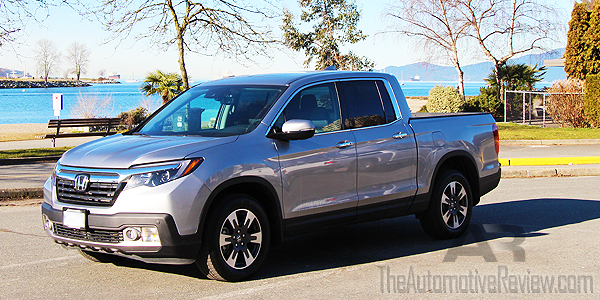
Utilizing a unibody design thanks to Honda’s latest crossover platform, it shares a lot of its underpinnings and structure with Honda’s larger SUV, the Pilot. The 2017 Ridgeline becomes not your typical truck and it doesn’t really compete with the rest of the midsize segment trucks, not directly at least. It’s far too car-like and refined to be a utilitarian only vehicle like other rivals. The thing is, most people don’t have a need for a rugged workhorse, and instead want something which is comfortable, a good daily driver and does okay on economy. By offering all of that, the 2017 Honda Ridgeline is in a way the greatest threat to the classic pickup as we know it.
EXTERIOR DESIGN
The 2017 Ridgeline’s exterior design has come a long way since its first introduction in 2006. The front end is much sleeker and more aerodynamic, while the cab sits more upright and the cargo bed is slightly boxier. The resemblance to the 2016 Honda Pilot is unquestionable there, although it’s still different in a lot of aspects. They do share components, but are very much different beasts.
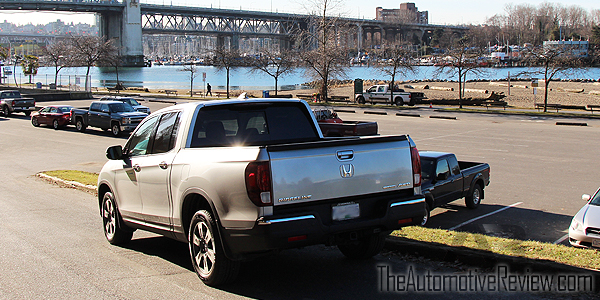
The front fascia has adopted Honda’s new design language, although it isn’t as expressed as the Civic for instance. Instead, it maintains a conservative look, with more traditional headlights (projector style), LED running lights and fog lights. The doors on the side look like massive slabs of blocks, with upright openings and high window lines. An accent line runs from the front end to the rear via the door handles, giving the car some character and breaking apart the visually simple and minimal design. The back follows very much the same concept. A flat-looking tailgate, simple chrome badges and elegant accent strips. The tailgate features an innovative dual-action element. It can open like a conventional tailgate, pivoting down, or like a barn door, swinging out wide.
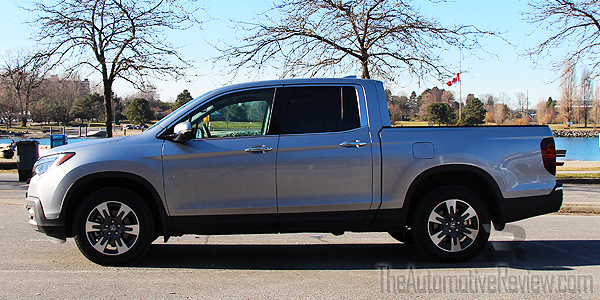
The cargo bed is more than decent for light-duty work, but it can’t compete with larger trucks. The walls are almost fully vertical, with small wheel wells which give way for a lot of cargo space.
INTERIOR COMFORT
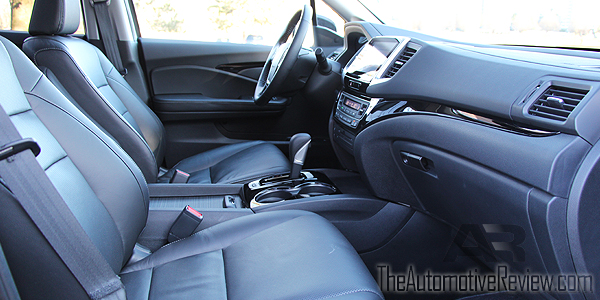
The interior cabin of the 2017 Honda Ridgeline is much more closely related to the 2017 Pilot than the exterior. It’s got the same flowing, elegant dash design, but a different gear selector. The Pilot’s push-buttons have been replaced with a traditional shifter stick in the Ridgeline. Although the steering wheel is full of buttons, it doesn’t feel cluttered or overwhelming and allows for the control of pretty much any feature. Everything is intuitive and ergonomic, especially the eight-inch infotainment touchscreen which features an entire row of touch buttons on the left side. With USB, Bluetooth, Apple CarPlay and Android Auto capabilities, there’s a variety of ways the driver can connect with the Ridgeline. The instrument cluster offers two smaller analog gauges for the tachometer, and temperature, with a huge central display with a dedicated speedometer.
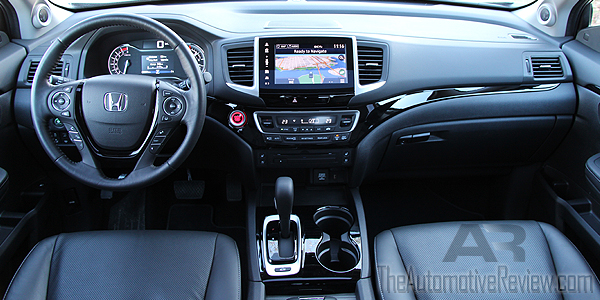
Legroom and headroom is more than adequate, especially in the front row. The rear seats offer ample amount of space for three people to sit across without too much trouble. Even though it’s by no means a large pickup, it still offers remarkable space for the rear passengers. For convenience, the 60/40 split rear bench folds completely against the back wall with just a single lever pull.
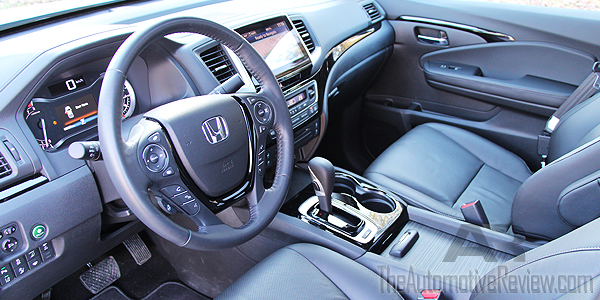
ENGINE & DRIVE
The hood of the 2017 Ridgeline hides a familiar sight – Honda’s 3.5L i-VTEC V6 coming straight from the Pilot. Although the engine is by now well-known and somewhat of an icon, it got a well needed upgrade in the form of direct fuel injection, a 30 horsepower increase and a 15 lb-ft of torque bump. This results in a total of 280 hp and 262 lb-ft of torque.
As always with Honda, it’s not purely about power or speed. The engine offers a 60-degree V layout, made from an aluminum alloy with iron cylinder liners. The high-strength steel crankshaft and forged steel connecting rods make sure the engine is as reliable as any other Honda unit. The V6 can shut off three of its cylinders if it detects that it can run on the remaining three leading to impressive fuel consumption savings.
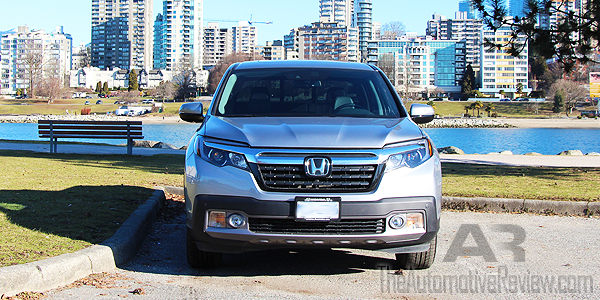
Then there’s Honda’s i-VTEC with a two-stage Variable Cylinder Management system. Controlling the overhead camshaft, lift profile, manipulating the valve timing and the lift duration of the valves, it’s able to set a low lift, short timing map below 5,350 rpm for increased efficiency and reduced fuel consumption. Above that, the timing changes, as does the long-duration profile, letting more air into the cylinders.
Power is sent to the front-wheels via Honda’s six-speed auto rather than the old five-speed. The new AWD system uses an i-VTM4 torque vectoring transfer case along with the Intelligent Terrain Management which offers four modes for different terrain and weather. The system works front to rear and left to right, giving amazing traction under any circumstances.
Overall, the 2017 Ridgeline drives more like a car than a truck, has plenty of power, precise steering and handling, leading to an overall smooth, reassured and sporty drive. Not to discourage its uses as a pickup truck, the AWD Ridgelines can tow 5,000 lbs while FWD versions still manage a respectable 3,500 lbs.
FINAL THOUGHTS
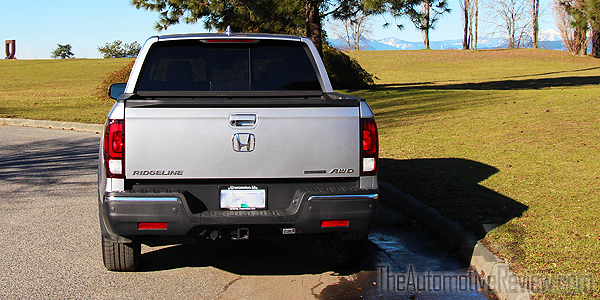
The 2017 Honda Ridgeline is an extremely rare pickup. It is one of a handful of trucks offering genuine towing and hauling capabilities while maintaining car-like drivability. If you need a light-duty workhorse capable of going off-road, managing snow and rain easily but don’t want to sacrifice reliability, comfort and refinement, the 2017 Honda Ridgeline is the perfect choice!




